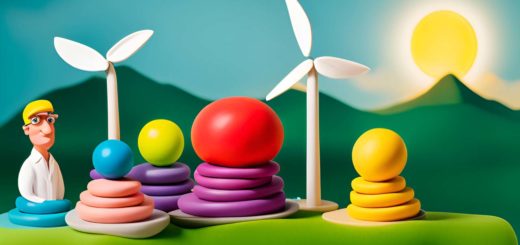How Australia is Leading the Way in Green Technology Innovation

Green technology, also known as clean technology, refers to the use of innovative methods, products, and services that promote environmental sustainability. As mentioned earlier, the importance of green technology in Australia cannot be overstated, given the country’s unique natural environment and the global need for sustainable development. In recent years, Australia’s leading role in green technology innovation has garnered international attention.
From solar and wind energy to electric vehicles and sustainable agriculture in Australia, the nation is pushing the envelope when it comes to environmentally friendly solutions. This commitment not only benefits the environment but also supports the growth of a vibrant green economy, spurring job creation and fostering a culture of innovation.
Government Support for Green Technology
Recognising the significance of green technology in Australia’s future, the government has introduced various initiatives for green technology. This support extends to funding for green technology startups and offering tax incentives for green technology companies. As a result, Australia has become a hotspot for clean technology research and development, attracting top talent and investment from around the world.
One noteworthy government initiative is the Australian Renewable Energy Agency (ARENA), which provides financial assistance and expertise to advance renewable energy projects. Additionally, the Clean Energy Finance Corporation (CEFC) offers loans and other financial products to support businesses in developing and deploying clean energy technologies.
Green Energy in Australia
Australia is blessed with an abundance of natural resources, making it an ideal location for the development of green energy. Solar, wind, and hydro energy are just a few examples of renewable energy sources that are making a significant impact in Australia.
Solar energy in Australia has seen tremendous growth in recent years, with the country boasting some of the highest solar penetration rates globally. Rooftop solar installations are becoming increasingly common, and large-scale solar farms are also being developed across the country.
Similarly, wind energy in Australia has become a significant player in the country’s energy mix. With its vast open spaces and favourable wind conditions, Australia is an ideal location for wind farms. The country is home to numerous wind energy projects, both onshore and offshore, generating clean electricity for millions of homes and businesses.
Hydro energy, while not as prevalent as solar and wind, also plays a role in Australia’s renewable energy landscape. Harnessing the power of water, hydroelectric facilities generate electricity through the movement of water in rivers and dams.
Sustainable Transportation in Australia
Transportation is another sector where Australia is making strides in sustainability. Electric vehicles (EVs) in Australia are becoming more popular, thanks to government incentives and a growing network of charging stations. As battery technology improves and prices continue to drop, EV adoption is expected to surge in the coming years.
Public transportation in Australia is also transitioning towards greener alternatives, with cities like Melbourne and Sydney investing in electric trams, trains, and buses. These investments not only reduce emissions but also improve air quality and lessen congestion in urban areas.
Bike-sharing programs in Australia have gained popularity in recent years, offering residents a convenient and eco-friendly mode of transport.
These programs, available in major cities like Sydney and Melbourne, encourage cycling as a means of commuting, thereby reducing traffic congestion and air pollution.
Green Buildings in Australia
Green buildings are another area where Australia is making significant progress in sustainability. With the adoption of green building standards in Australia, such as the Green Star rating system, architects and developers are encouraged to create environmentally friendly and energy-efficient structures.
Sustainable architecture in Australia focuses on the integration of renewable energy, efficient water use, and sustainable materials to reduce a building’s environmental footprint. This approach not only benefits the environment but also improves the quality of life for occupants through better indoor air quality and overall building performance.
A prime example of sustainable architecture in Australia is One Central Park in Sydney. This innovative residential and commercial complex features a striking vertical garden façade, energy-efficient systems, and a water recycling plant. Its design and implementation showcase the potential for green buildings to enhance urban living and contribute to a sustainable future.
Future of Green Technology in Australia
As the world continues to grapple with climate change and environmental degradation, the importance of green technology becomes increasingly clear. In Australia, emerging green technology trends show great promise in driving the country towards a more sustainable future.
One such trend is the growing focus on a circular economy in Australia. This concept promotes the efficient use of resources and waste reduction strategies in Australia by designing products and processes that are reusable, recyclable, and regenerative. By adopting a circular economy approach, Australia can minimise waste, conserve resources, and create new economic opportunities.
Another trend is the continued development of innovative green technologies, such as advanced energy storage solutions and smart grids. These technologies are crucial in supporting the integration of renewable energy into the power grid and ensuring a stable, efficient, and low-carbon energy system.
Moreover, with the increasing global focus on sustainability, there is significant potential for green technology to drive economic growth in Australia. As the nation continues to lead the way in clean technology innovation, it can attract investment, create new job opportunities, and foster a sustainable economy that benefits both people and the environment.
Conclusion
In conclusion, Australia’s role in a sustainable future is an important and exciting one. By embracing green technology across various sectors, including energy, transportation, and construction, the country is well-positioned to address environmental challenges and create a greener, cleaner future for generations to come. With continued government support, innovation, and collaboration, there’s no doubt that Australia will remain a leader in green technology and sustainable development.
Now that you’ve gained some insight into the state of green technology in Australia, why not explore other aspects of sustainability in the country? Check out our articles on sustainable agriculture in Australia and waste reduction strategies in Australia to learn more about how Australia is working towards a greener future.



